So, you want to land your first sale, but your marketing budget is zero?
Well, you’re in the right place.
There are tons of online marketing strategies out there, such as pay-per-click advertising, social media marketing, video marketing, and more.
But these strategies can take a lot of time, money, and experience to pull off.
In other words, it can be difficult for new entrepreneurs to start selling products fast with these strategies.
Enter social selling.
This marketing tactic enables anyone to start selling products online quickly. You can use it to laser-target potential customers, build rapport, and, hopefully, land your first few sales – and this guide will show you how.
Sound good? Let’s dive in.
Post Contents
- What Is Social Selling?
- What Makes Social Selling Different From Other Social Network-Based Strategies?
- Why Should You Use Social Selling?
- How to Get Your First Sale With Social Selling
- Build the Foundations for Successful Social Selling
- Step 1. Set Up and Optimize Your Ecommerce Store
- Step 2. Optimize Your Social Media Profiles
- Step 3: Be Transparent and Personal
- Step 4. Have a Compelling Offer
- Step 5. Define Your Target Market
- Step 6. Understand Social Listening
- Step 7. Find Potential Customers
- Step 8. Create Lists of Potential Customers
- Step 9. Focus on Relationships, Not Sales
- Step 10. Establish Ways to Provide Value
- Step 11. Connect with Your Potential Sales Leads
- Step 12. Deepen Relationships
- Bonus: Still No Sales? Do Influencer Collabs to Get Traffic
- Build the Foundations for Successful Social Selling
- Summary: Social Selling
- Want to Learn More?



What Is Social Selling?
Social selling is a marketing and sales tactic used to find and engage potential customers on social media. By providing value and developing strategic relationships, store owners can nurture potential customers while gently marketing for ecommerce sales.
Social selling is an art, not a science.
→ Click Here to Launch Your Online Business with Shopify
Unlike Facebook advertising, there’s no analytics dashboard or key performance indicators to track.
Instead, it’s all about relationships.
Social selling is a strategy most commonly used in the business-to-business (B2B) world where relationships are key to landing large vendor contracts. As a result, social selling has almost entirely replaced the dreaded practice of cold-calling.
However, as a small business, you can use social selling to kickstart your sales.
With the rise of social networks like Facebook, Instagram, YouTube, and Pinterest, social selling is now a vital aspect of every online business’ marketing efforts.
Let’s look at a couple of examples of social selling from social movement and apparel company So Worth Loving.
In the image below, So Worth Loving goes out of its way to personally connect with a Twitter follower.
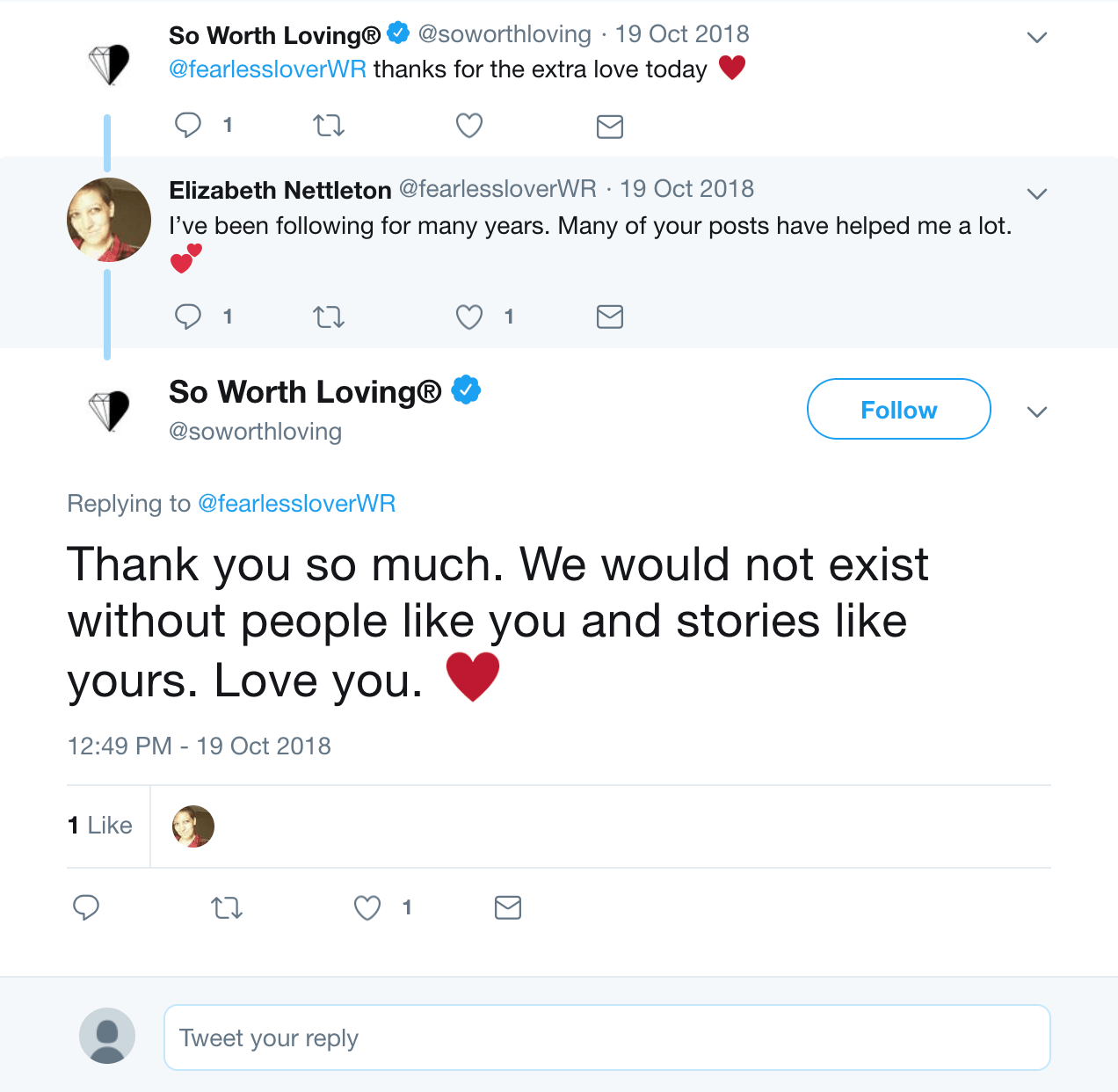
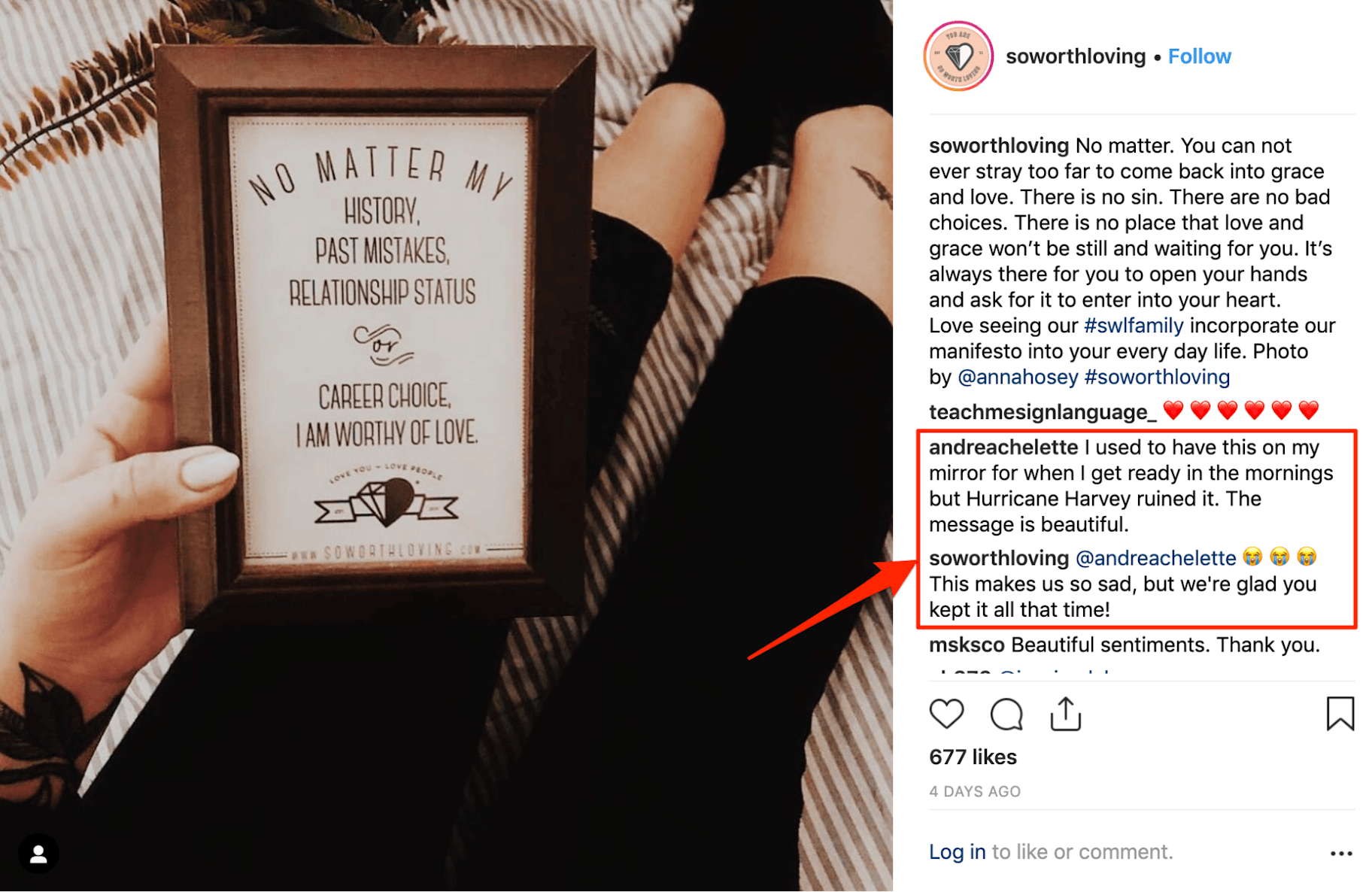
The business creates interest, rapport, and trust with its followers. As a result, it’s likely that these followers will become paying customers in the not-to-distant future.
What Makes Social Selling Different From Other Social Network-Based Strategies?
Is social selling the same as social media advertising? No.
Is it the same as social commerce? Nope.
What about good ol’ social media marketing? Kinda, but still no.
Okay, so what differentiates social selling from these other forms of internet marketing? Well, with some help from hair extension brand Luxy Hair, let’s run through the key factors that define social selling.
To start, social selling doesn’t cost money – social media advertising does.

Remember: social selling is all about developing strategic one-on-one sales relationships on social media.
On the other hand, social commerce is the process of selling products or services through social media platforms.
As a result, social commerce typically involves tools such as Facebook shops, Instagram shops, and shoppable posts like the one pictured below.
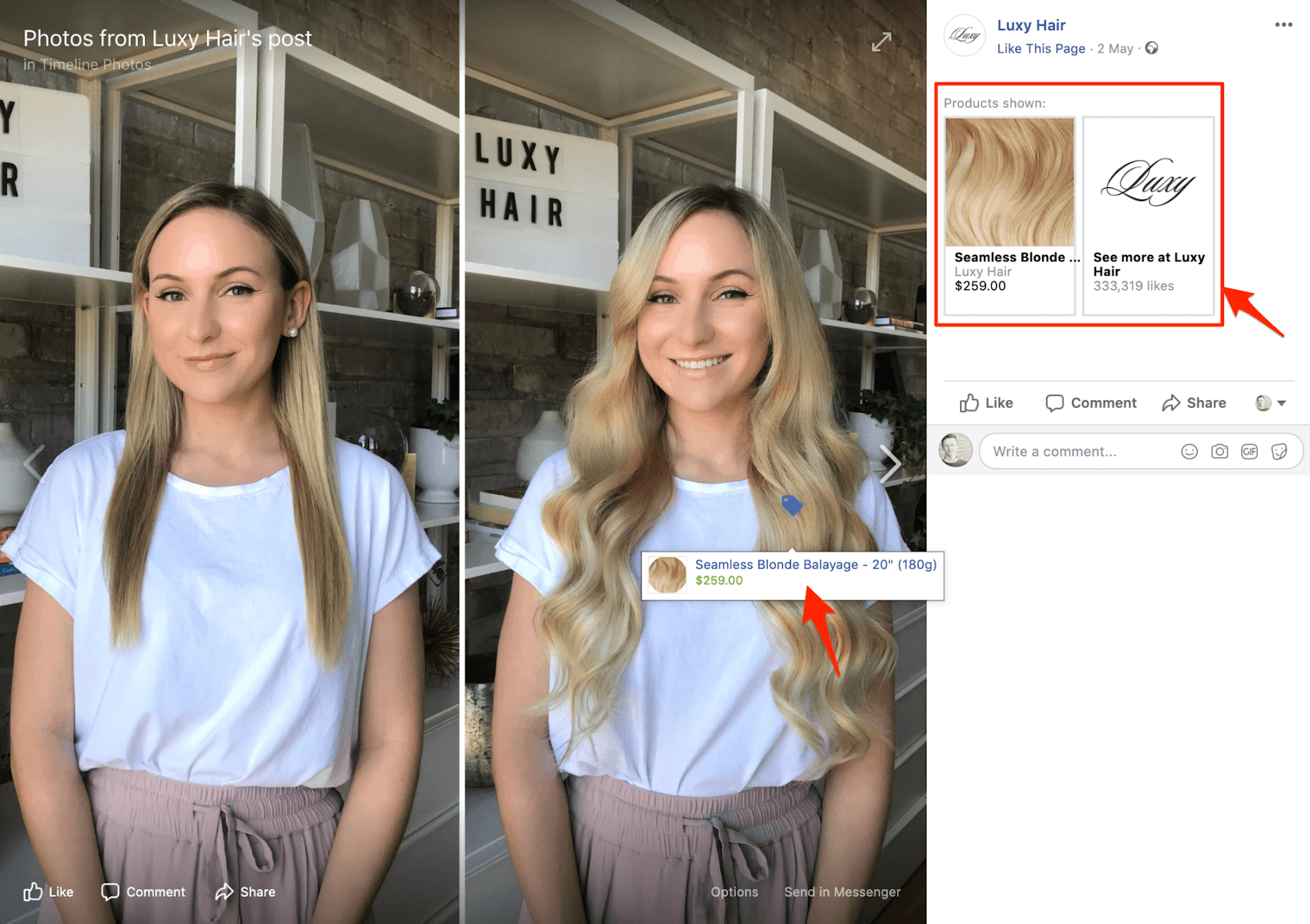
However, social media marketing takes into account all organic social network marketing strategies used to engage users, grow a following, and promote your products.
This includes general posts sent out to all of your followers.

In other words, social selling isn’t about broadcasting, but connection. It’s much closer to word of mouth marketing than advertising.
Lastly, social selling isn’t customer service.
Although social networks are great places to provide customer service, social selling happens before the sale, not after.
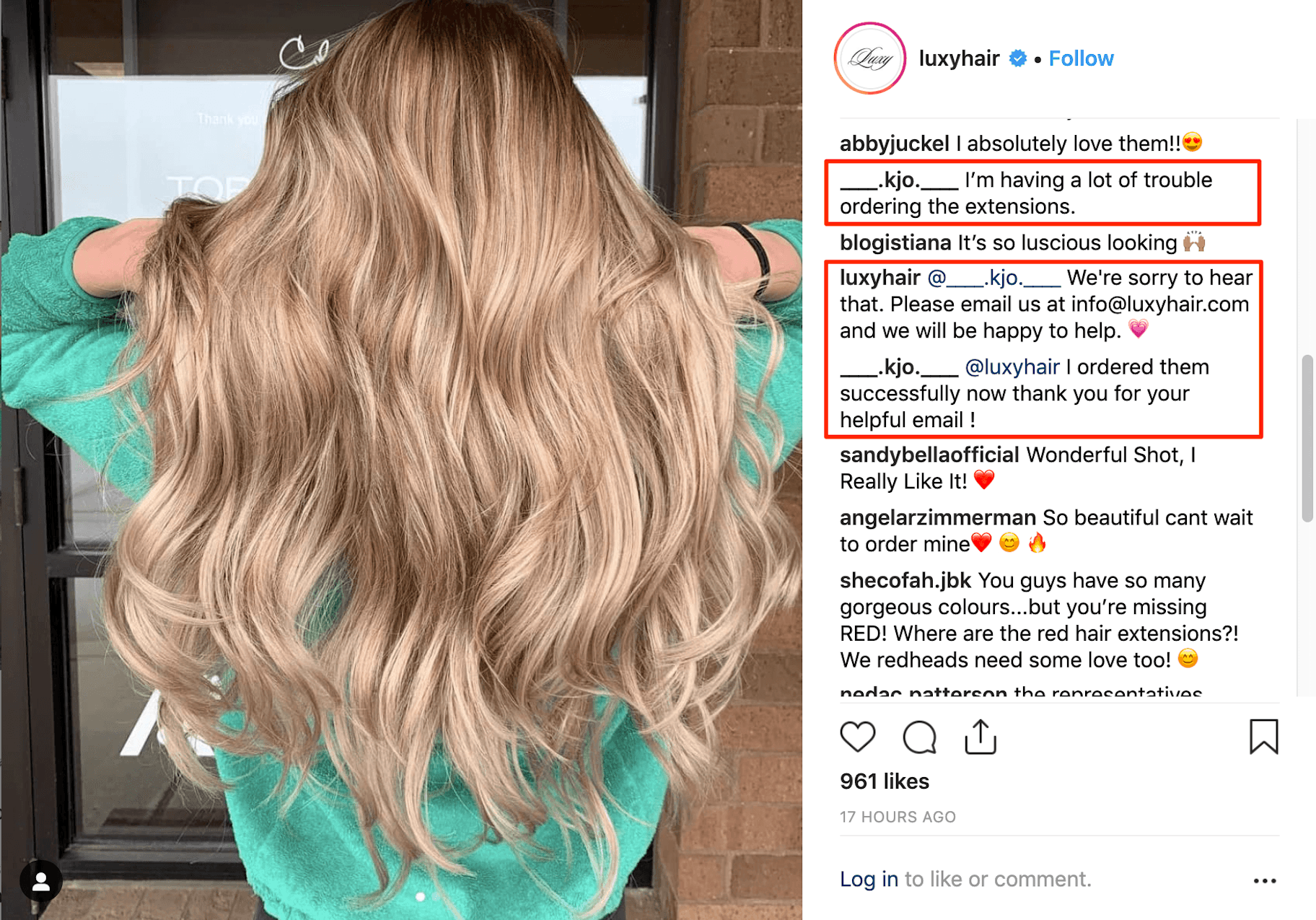
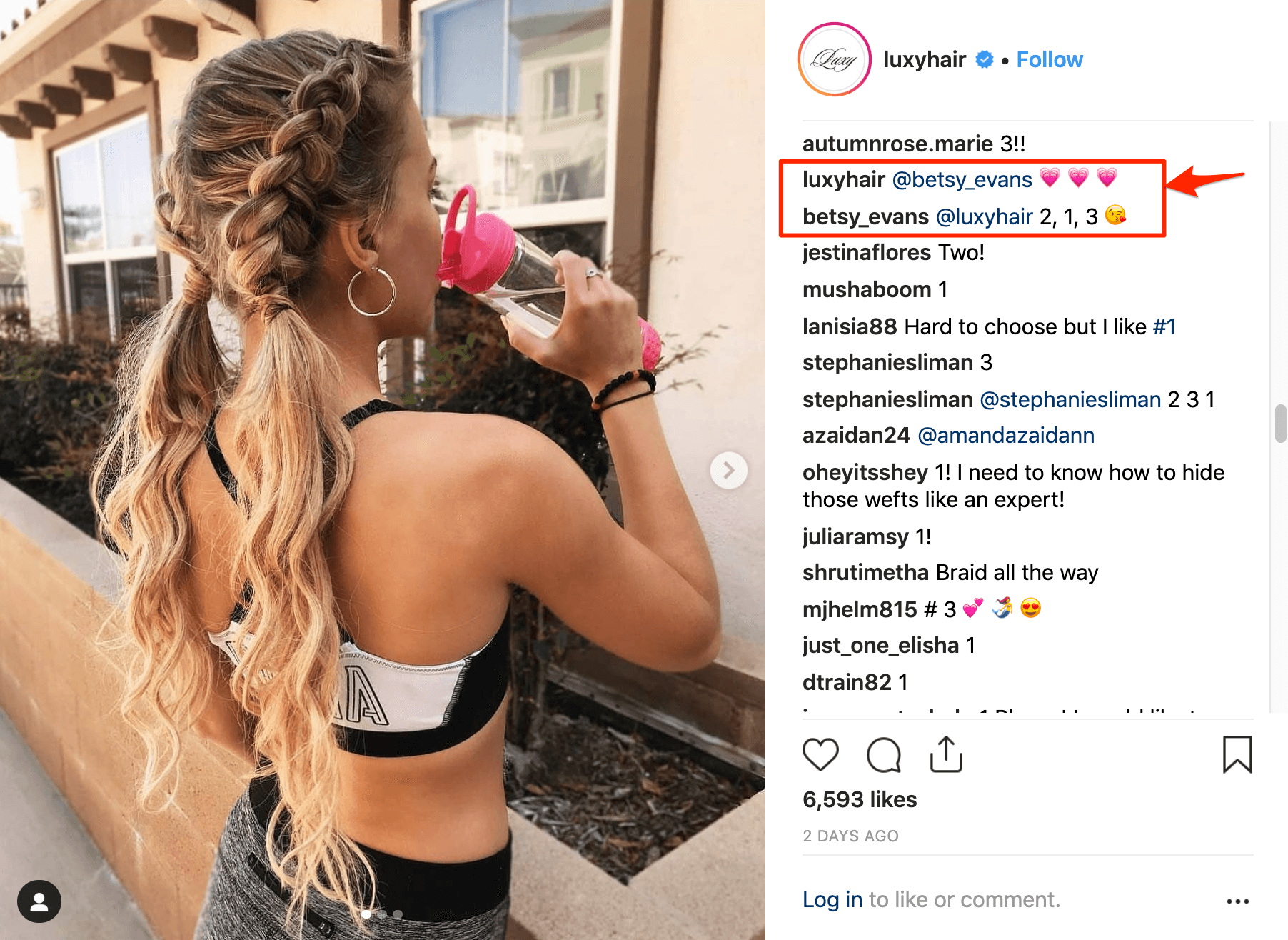
Why Should You Use Social Selling?
Social selling works.
In fact, 78 percent of salespeople that use social selling outsell their competition who haven’t yet joined the party.
What’s more, according to Constant Contact, brands that interact with customers on social networks gain 20 to 40 percent more revenue per customer compared to companies that don’t.
This makes perfect sense.
Successful businesses are built on relationships. And more and more people are using social networks to connect and form relationships.
To put it in perspective, out of the 7.7 billion people in the world, 2.77 billion people now use social media.
That’s crazy when you remember it barely existed 20 years ago.
Facebook alone has more than 2.3 billion monthly active users, and in 2018, Instagram reached 1 billion monthly active users.
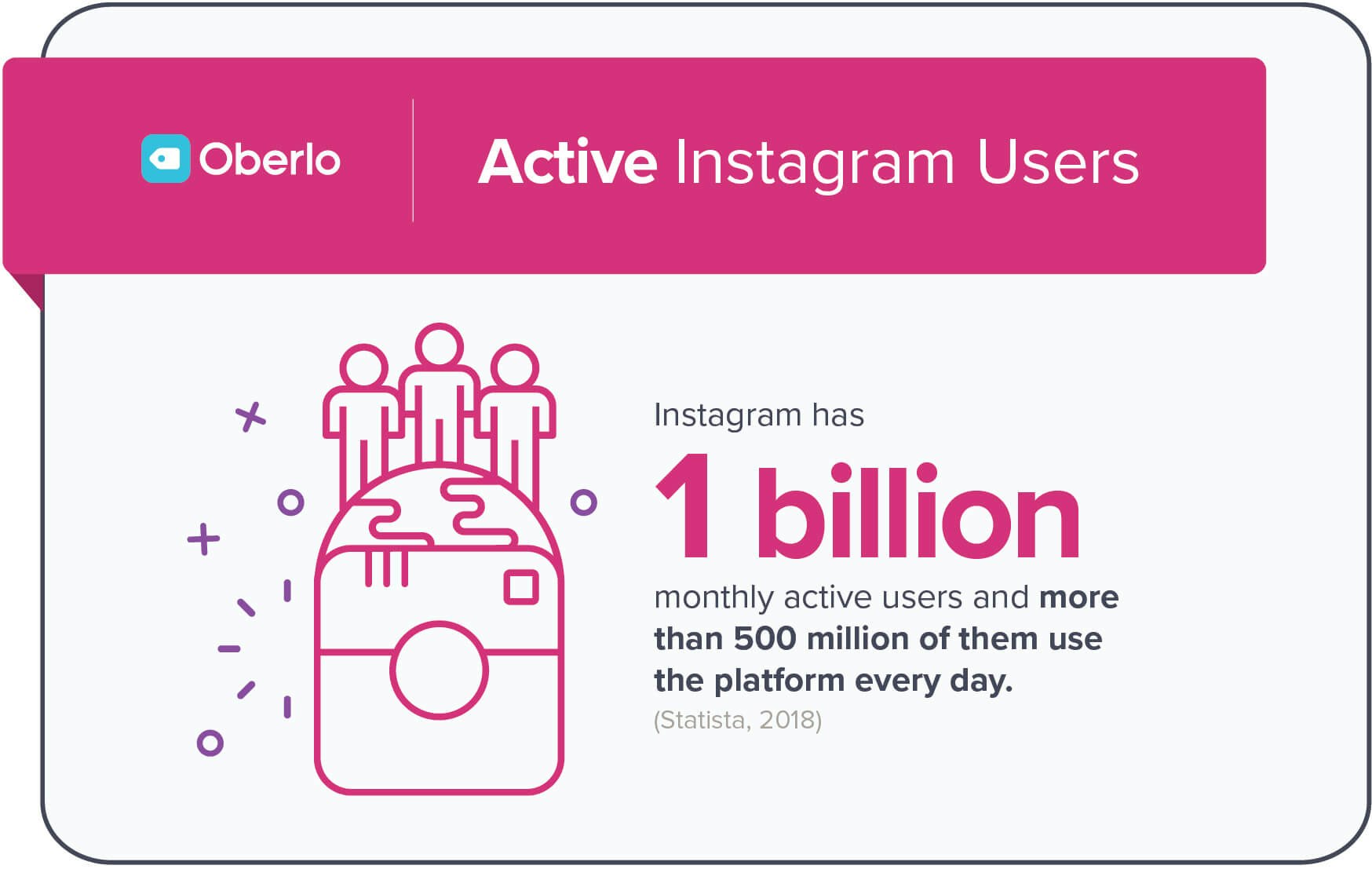
Social selling is a completely manual process. This means that you can’t scale it like Facebook advertising, so it can be time consuming.
However, it does provide ample opportunity to learn about your target market’s preferences, needs, and desires – and how you can better meet them.
It’s like we recently posted on our Facebook page:
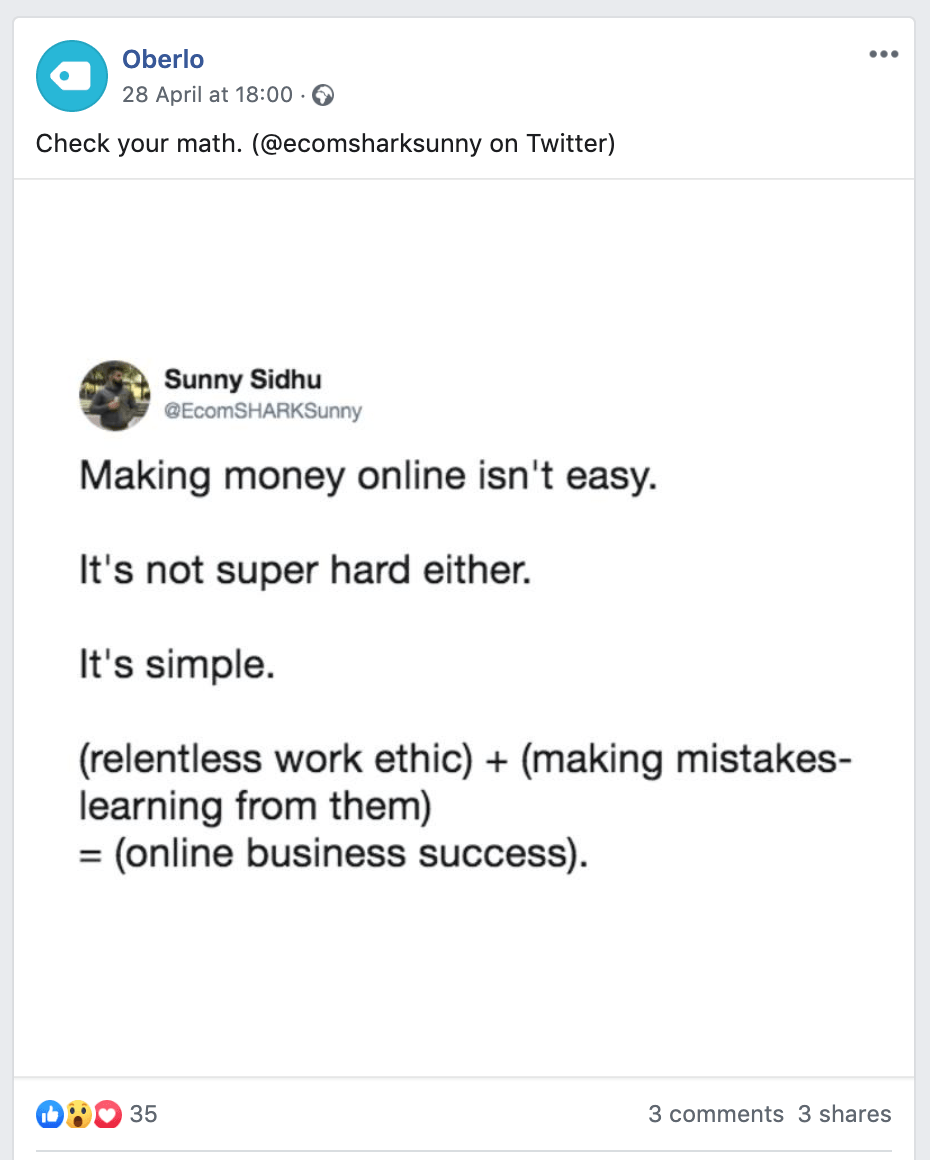
How to Get Your First Sale With Social Selling
We’ve broken down the steps you need to take to succeed with social selling.
Each step has action items and examples to learn from, so follow along until the end to land your first sale!
Build the Foundations for Successful Social Selling
Pretty much every marketing strategy will fail if you don’t lay strong foundations.
So, before you get started with social selling, here’s what you need to do:
Step 1. Set Up and Optimize Your Ecommerce Store
If you haven’t already, you need to set up your ecommerce store and get some products to sell.
Then, once you’re set up, you need to make your store appear more trustworthy.
Why?
As a new business, purchasing from your store is a risk. Why should people take a chance on an unproven, unheard-of store when they could just shop on Amazon?
You need to counteract this problem as much as possible.
To start, choose a professional-looking Shopify theme, write epic product descriptions, and proofread your website for little mistakes that will diminish trust.
Next, go out of your way to get some positive reviews.
Reviews are gold as they play on the psychological phenomenon known as social proof. You can create more social proof and promote your dedication to security by including the logos of trusted payment solutions.
Finally, look for ways to instill trust, and reduce the risk for shoppers.
One of the best ways to do this is to offer a generous return policy, like apparel company Outdoor Voices.
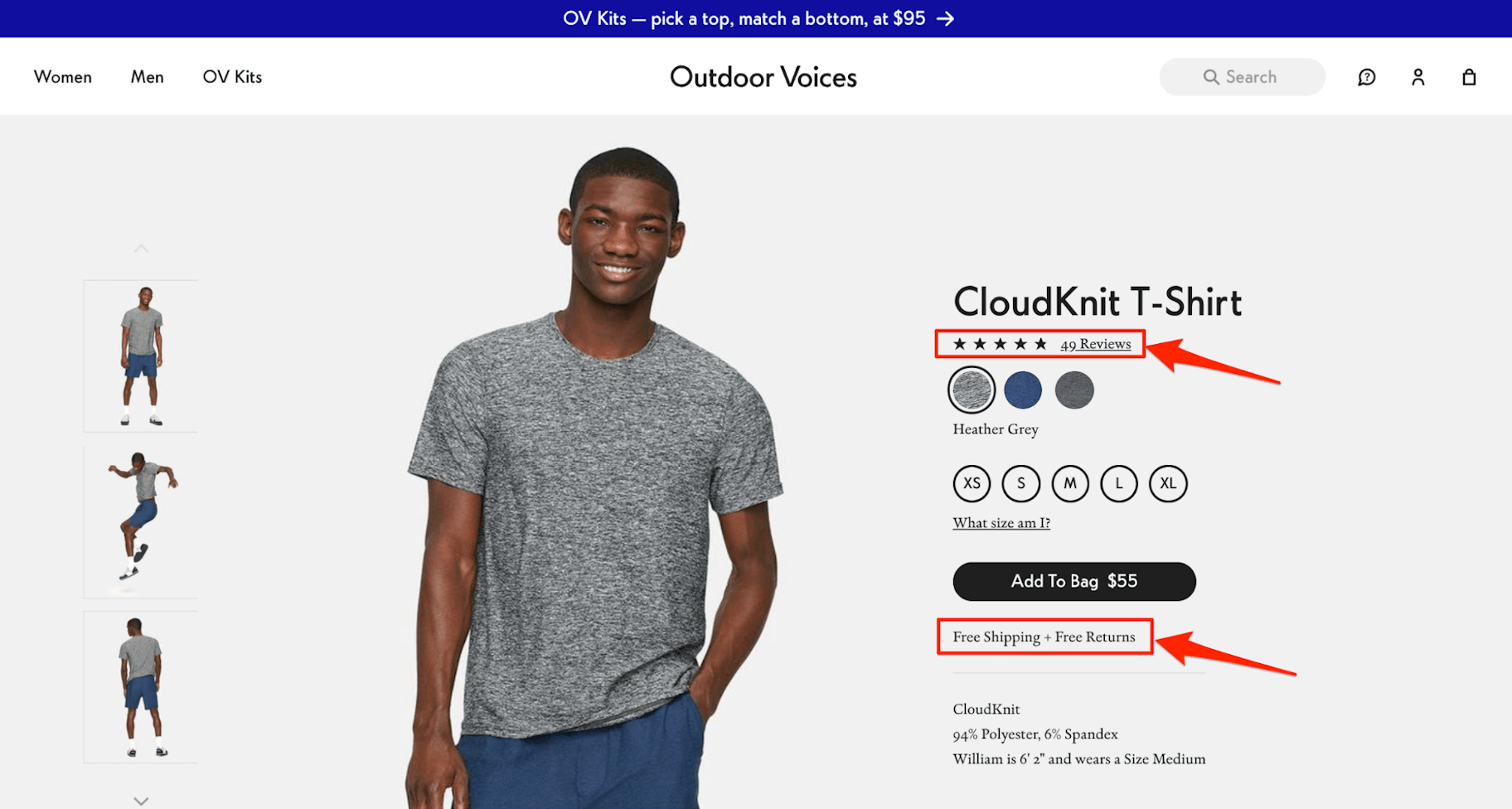
Step 2. Optimize Your Social Media Profiles
Social selling takes place on social networks. So, you also need to optimize your social media profiles to inspire trust among potential customers.
If you haven’t yet created social media profiles for your business, get started with Facebook, Instagram, or Twitter.
Or if you’re keen to get moving fast, you could keep things simple and just stick to Instagram for now.
Look at your profiles from your potential customer’s point of view – does your business appear credible and professional?
Temporary tattoo store Tattly has done a great job of optimizing its Instagram profile, using every opportunity to connect and engage its target market.
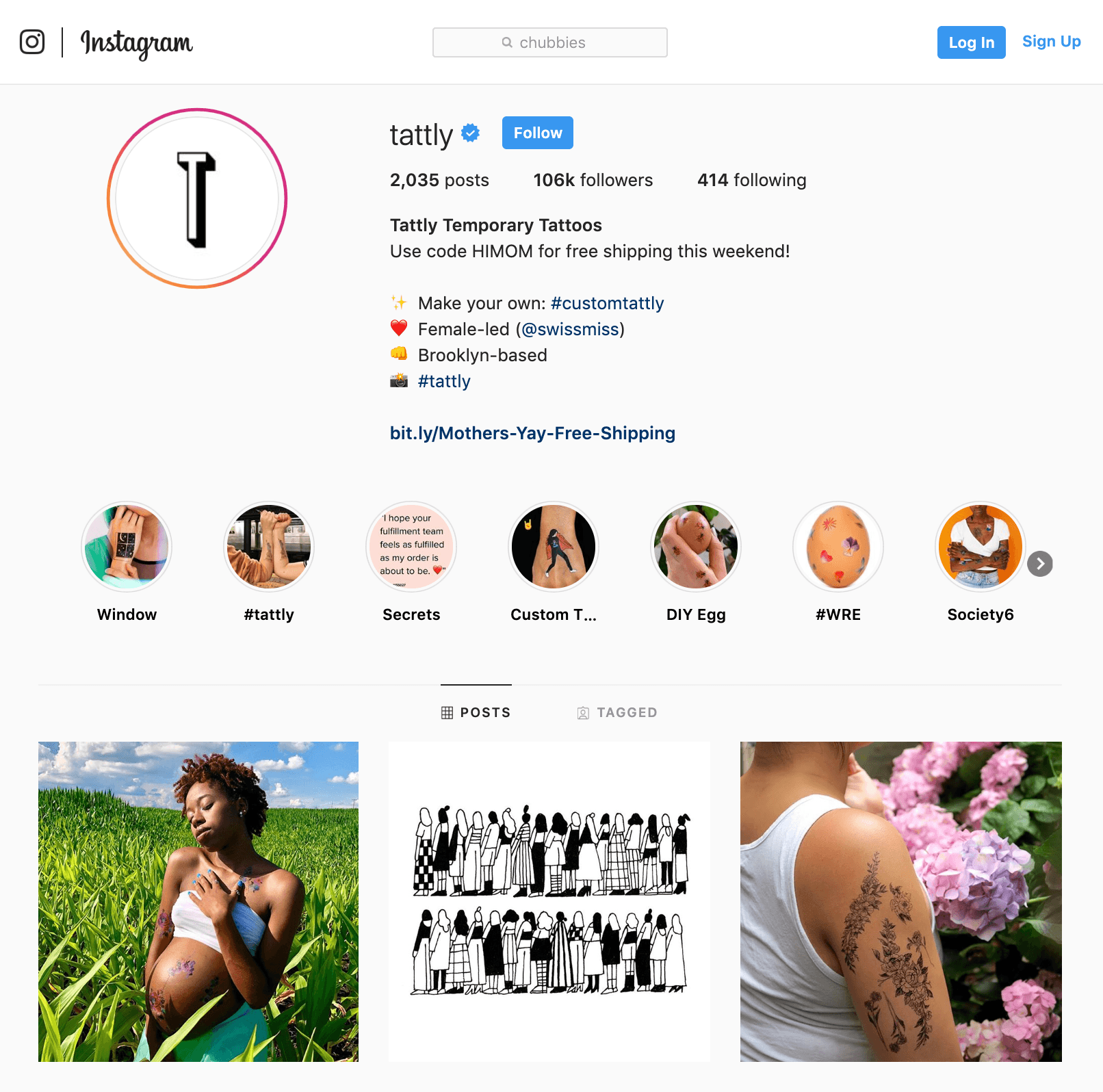
- Create a Facebook Business Page
- Set Up an Instagram Business Profile
- Set Up a Twitter Profile for Your Business
Step 3: Be Transparent and Personal
Don’t try to appear like something you’re not.
People aren’t stupid.
If you try to present your business as successful and established when it’s not, consumers will know instantly.
Then, they’ll feel weird about it and avoid you like the plague.
Instead, be transparent. Mention the fact that you’re a new business on a mission to provide incredible products and service to your customers.
Get personal.
Tell them your name and be open and relatable. Your unique personality and story are vital aspects of your brand when starting out.
This way, instead of appearing like an online scam with no proven reputation, you become a real person that others can trust and relate to.
Step 4. Have a Compelling Offer
Even if you’re personal and relatable, buying from your store is still a gamble for shoppers because you’re still unproven and unknown.
Again, why should they buy your products instead of from an established brand?
This is why you need a compelling offer.
Create an extra incentive that makes up for the fact that you don’t have a proven reputation. It needs to be compelling enough to make it worth taking a risk and buying from your store.
Apparel company Chubbies incentivizes shoppers with a free gift for purchases over $99.
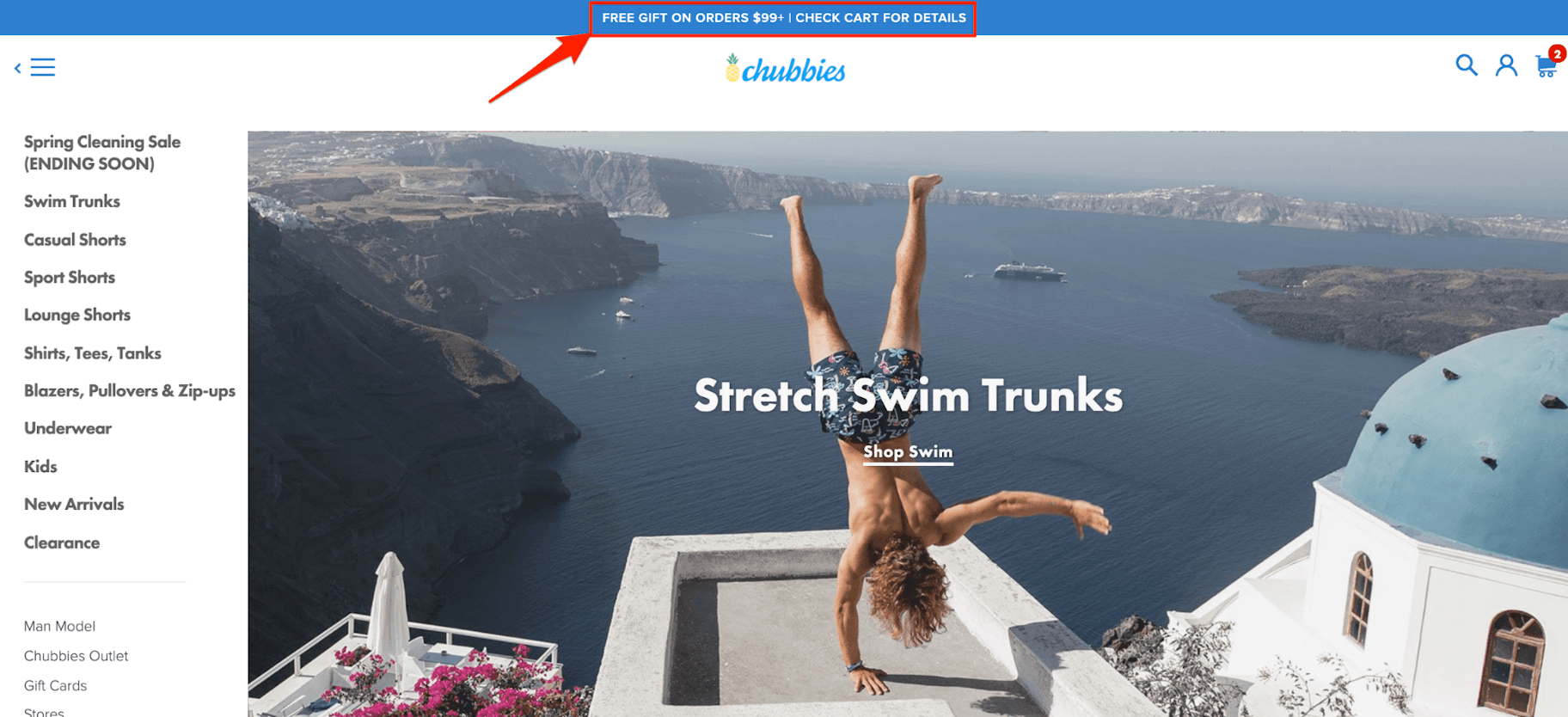

Now that you have your foundations in place, let’s find some potential customers.
Step 5. Define Your Target Market
Every successful business has a defined target audience.
This target market is the ideal customer the business aims to serve with its products or services.
Marketing author Philip Kotler explains: “There is only one winning strategy. It is to carefully define the target market and direct a superior offering to that target market.”
Get specific.
The more you know about your target market, the easier it is to find them and cater to their needs and desires.
The legendary consultant Peter F. Drucker once said, “The aim of marketing is to know and understand the customer so well the product or service fits him and sells itself.”
Step 6. Understand Social Listening
Social listening is the process of monitoring conversations on social networks to understand what consumers are saying about a brand or product.
For example, apparel business Chubbies can search the hashtag “#chubbies” on Twitter to see what people are saying about their brand without tagging their account.

Done right, social listening will tell you everything you need to make your business a success.
For example, say that you sell phone holders and cases. You can use social listening to identify opportunities and see what consumers are saying about your competitors’ phone holders.
Perhaps there’s a lot of talk about a new trending product that you could sell or an idea you could incorporate.
Look for pain points, recommendations, and requests – any opportunity to meet demand.
Step 7. Find Potential Customers
After you’ve done some research, you can start using social listening to find potential customers.
For example, say that you sell women’s clothing – it only takes a few seconds to search “#neednewclothes” on Twitter to find a long list of potential customers.
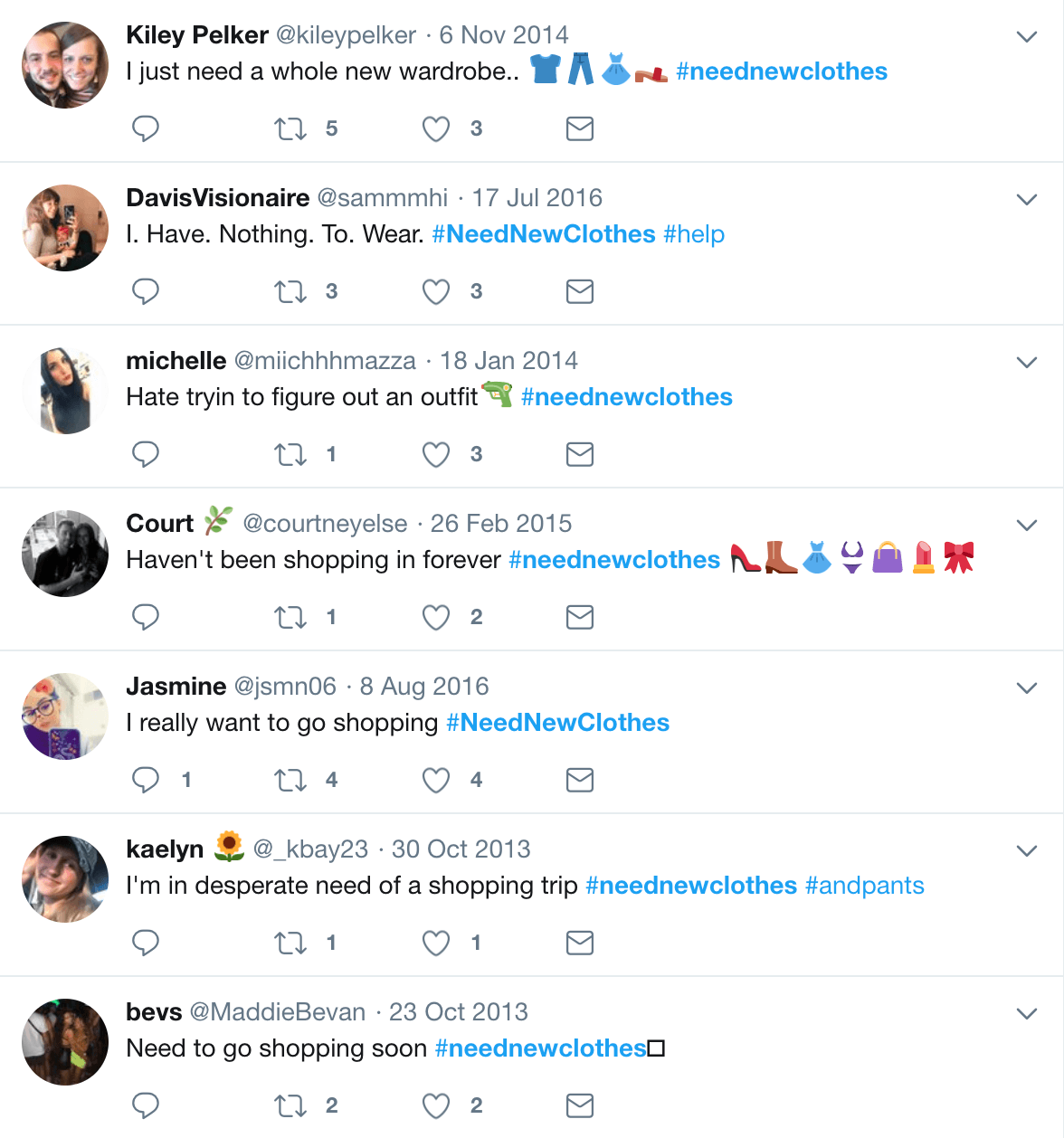
Ideally, you might have a personal connection to these people – just one mutual friend on Facebook can go a long way to adding credibility to your upcoming attempt to connect.
Step 8. Create Lists of Potential Customers
Once you’ve identified some potential customers, you can create lists of profiles to monitor and engage with.
You could simply follow their accounts, subscribe to their updates, or even create private lists using some social networks, like Twitter.
To create private lists on Twitter, click your profile picture, then click “Lists.”
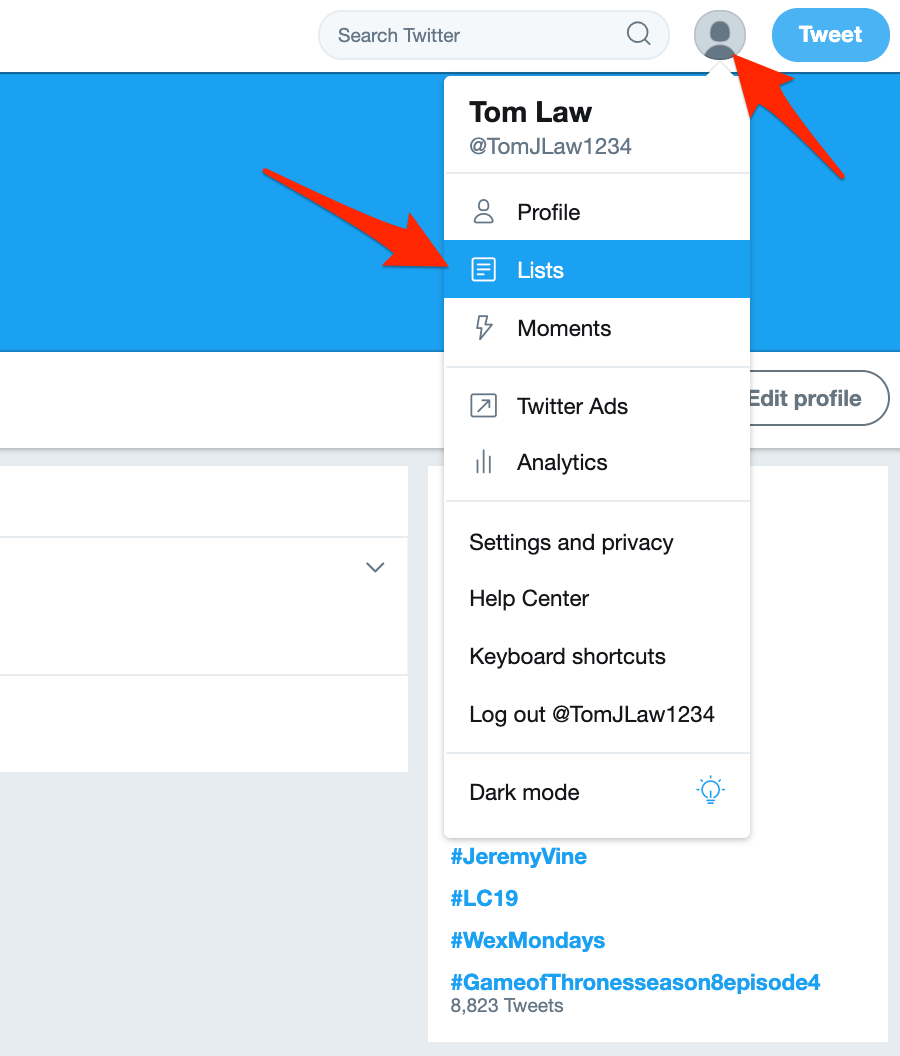
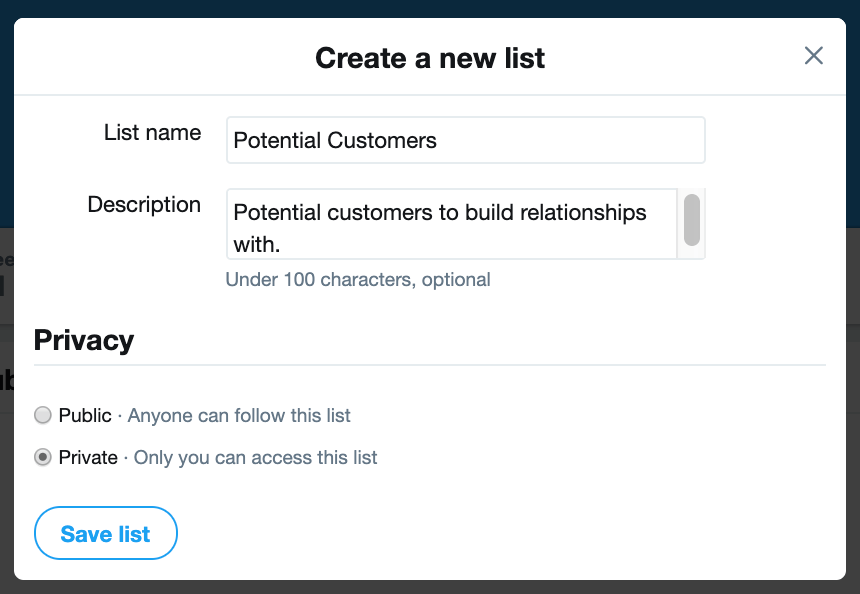
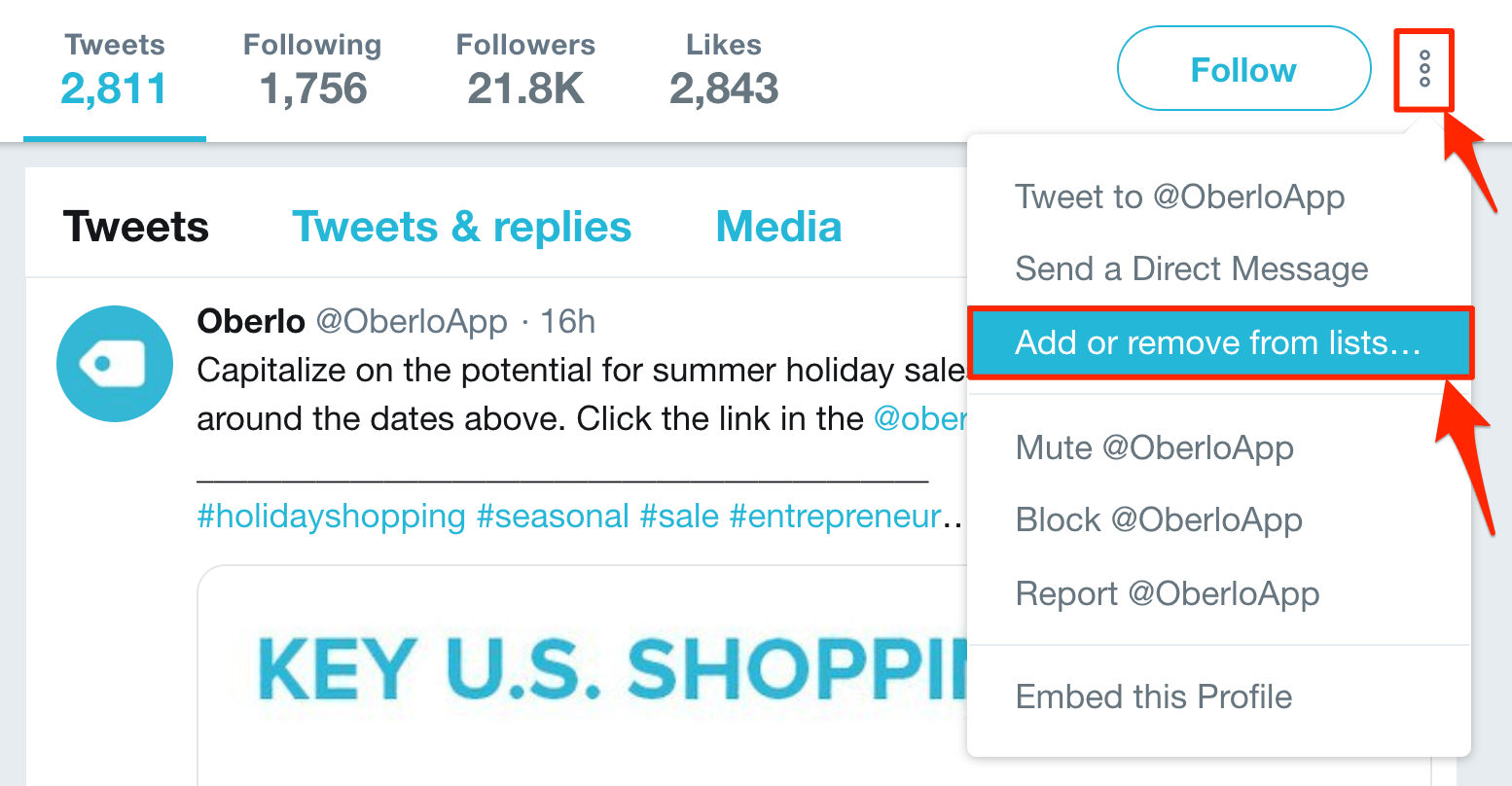
The key to social selling is the “social” part, not the “selling” part.
People buy from brands they like and trust – not pushy, anonymous, scam-like marketers.
So, let’s look at how to kickstart your new relationships.
Step 9. Focus on Relationships, Not Sales
The golden rule of selling is to give before you ask.
To put it another way, think of social selling like dating to find a wife or husband. The first question you ask can’t be, “Will you marry me?”
You have to establish rapport, trust, and connection first.
So, forget about the sale for now and focus on developing a genuine connection. If you do this enough times, the sales will follow.
Okay, but how can you start new relationships? In short, find ways to provide value.
Step 10. Establish Ways to Provide Value
There are tons of ways that you can provide value to your target market.
You could contribute to existing conversations in niche Facebook groups, respond to questions on Quora, do an “Ask Me Anything” on Reddit, or create content.
For example, say you sell travel gear to female digital nomads.
You could join the Female Digital Nomads group on Facebook, contribute to the discussions taking place, and create content to help the group members.
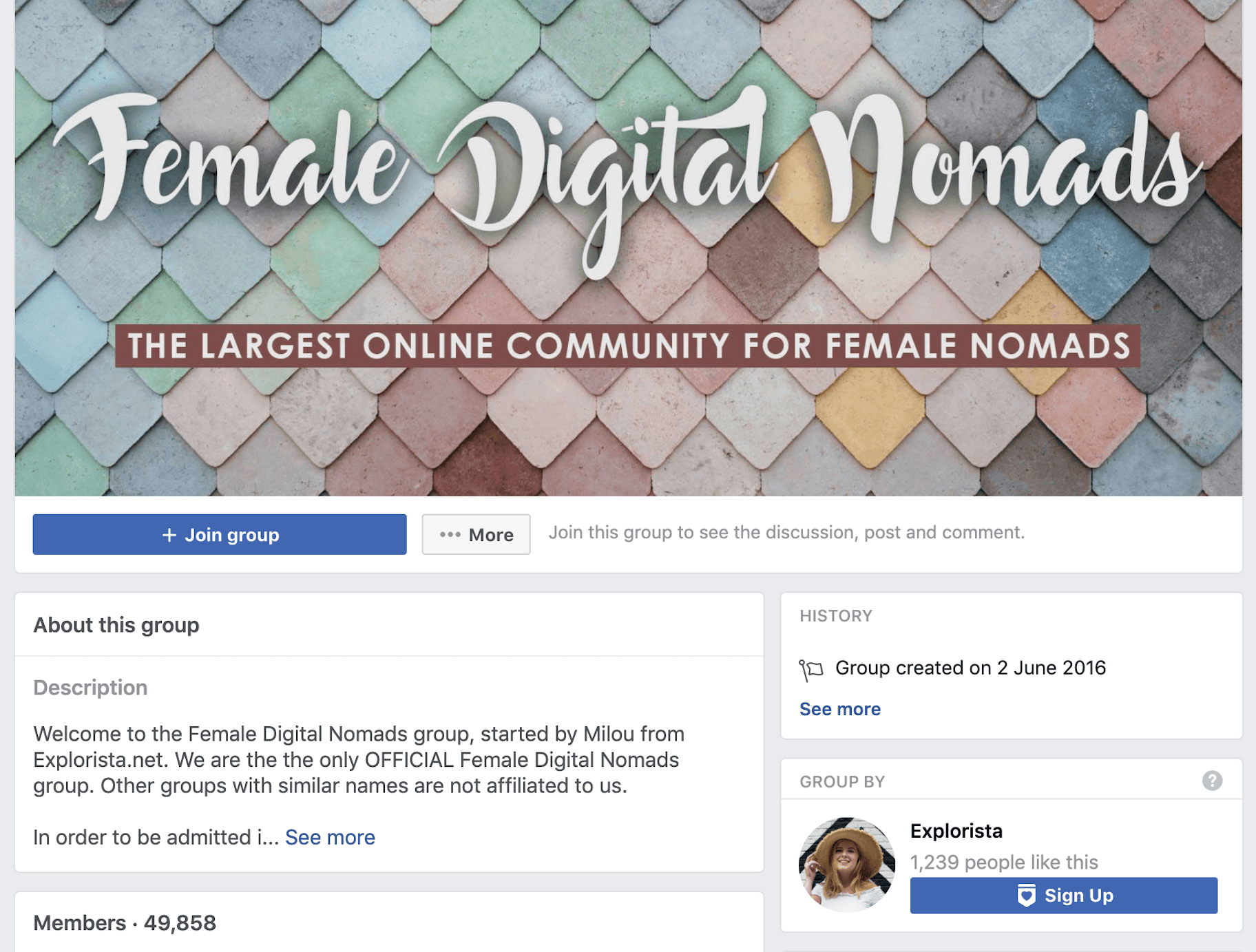
This will establish a relationship and expose your store to your target audience.
Plus, when a user gains value from one of your comments, all they have to do is click through to your account to see a link to your store.
Notice that none of these methods are pushy or salesy.
It’s all about giving before you get.
Step 11. Connect with Your Potential Sales Leads
When you provide value to your target market, people will begin to interact with your comments and posts.
(If you don’t get any engagement, you’re not providing real value.)
At this point, you should aim to deepen relationships with individuals who engage you online and continue to provide value.
For example, you might write:
“Thanks for your reply! I’m really glad you found my comment helpful. Do you have any other questions about being a digital nomad? I’m starting a business to help people live the digital nomad life and I’m keen to help in any way I can.”
Show up and engage.
Step 12. Deepen Relationships
Rome wasn’t built in a day – and relationships aren’t built with one Facebook message.
So, make sure to always respond to every comment or message. Constantly look for opportunities to provide value and connect with potential customers.
Rinse and repeat.
Done properly, it’s at this point that you should hopefully land your first sale!
Bonus: Still No Sales? Do Influencer Collabs to Get Traffic
If you’ve completed the steps above properly and are still struggling to land your first sale, there’s a chance that you might have chosen a bad product.
However, don’t give up yet.
Before you throw in the towel and choose another product, run a small influencer campaign to drive traffic to your social media accounts and website.
If your product isn’t too expensive, you can give samples to influencers in return for a shoutout on social media.
To start, identify some influencers in your niche with around 25k to 50k followers. Look for accounts that have a high amount of engagement, likes, and comments.
Then, use the template below to reach out and ask for a shoutout.
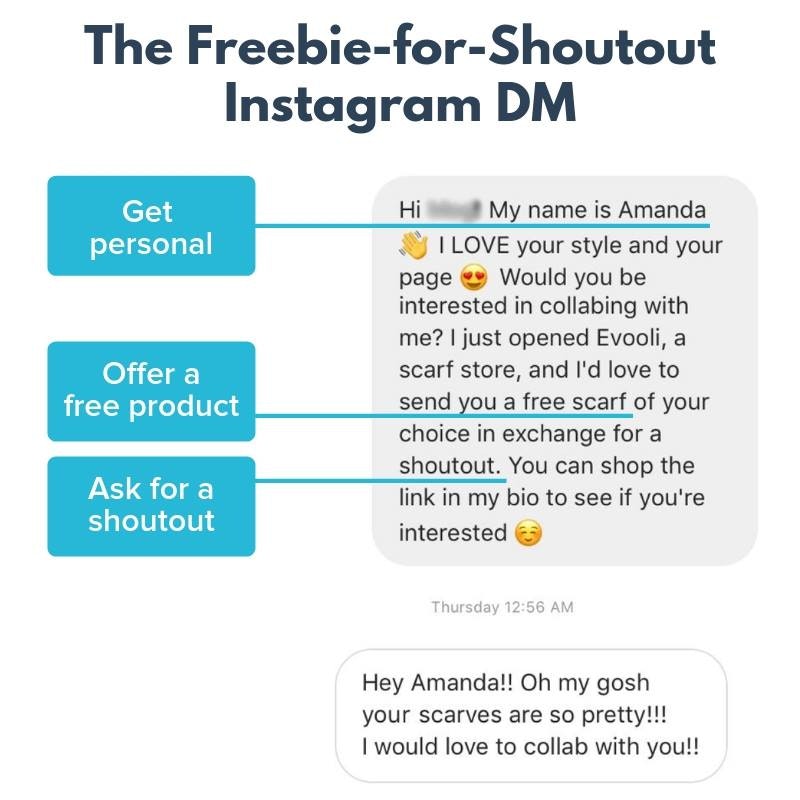
Summary: Social Selling
Social selling is all about relationships.
This highly effective strategy enables you to develop strategic relationships on social networks. You can then nurture these relationships in an effort to gently lead potential customers to make a purchase.
To summarize, here are the steps you need to take to land your first sale with social selling:
- Set the foundations: Optimize your store and social media accounts for trust.
- Be transparent: Avoid appearing like an online scam by being personal and relatable.
- Create a compelling offer: Incentivize buyers to take a chance on your new store.
- Define your target market: Get clear on the customers that you want to connect with.
- Find potential customers: Use social listening to research and connect with your target market.
- Follow potential customers: Create lists of potential customers that you can engage with over time.
- Focus on relationships, not sales: Don’t be pushy – people buy from people they like and trust.
- Give before you get: Find ways to contribute value to your target market.
- Connect with your potential customers: Connect, engage, and build rapport with people in your target market.
- Deepen relationships: Continue to deepen and nurture relationships by providing value.
Are you engaging in social selling? Share your experiences in the comments below!






